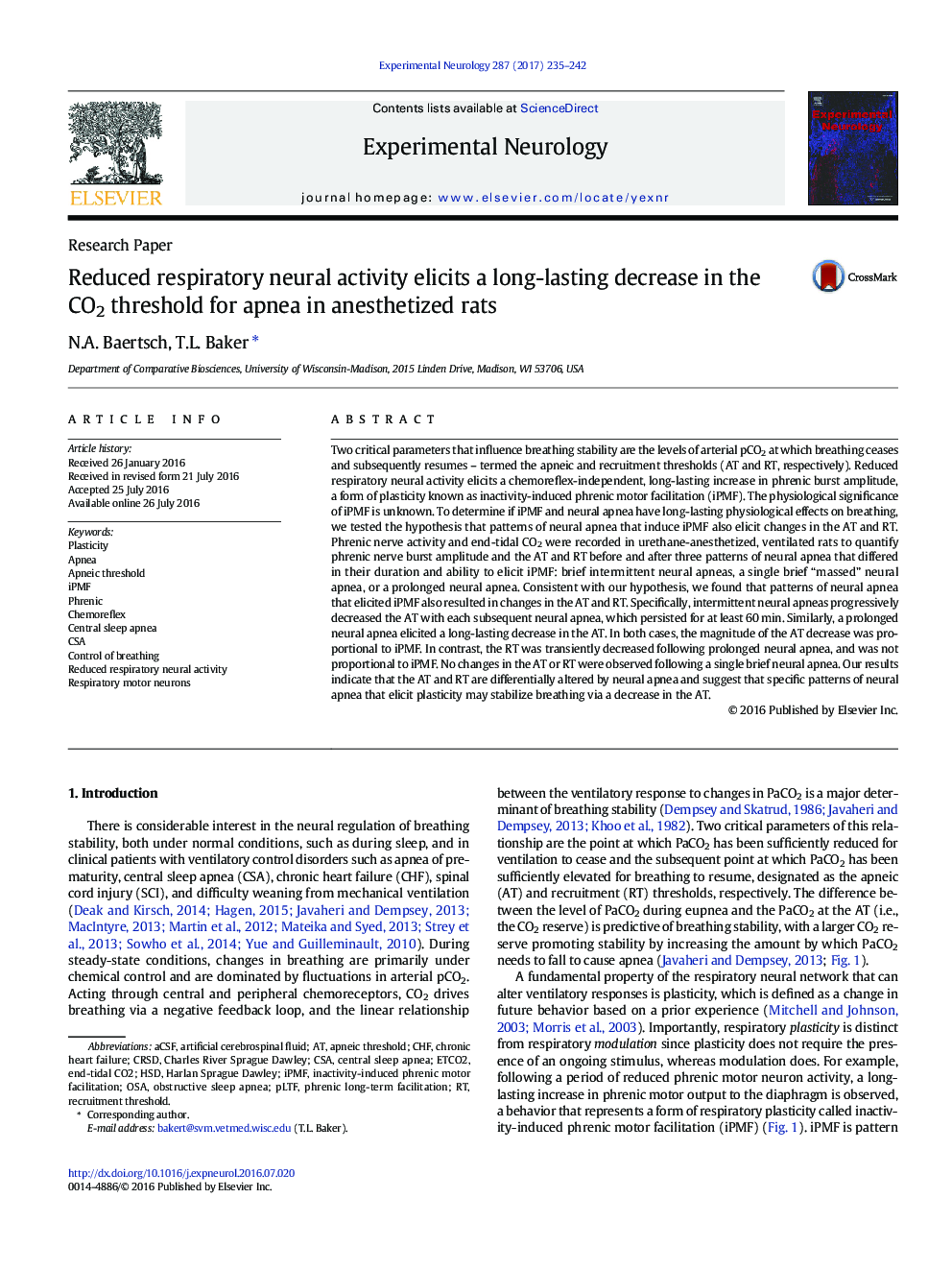| Article ID | Journal | Published Year | Pages | File Type |
|---|---|---|---|---|
| 5629224 | Experimental Neurology | 2017 | 8 Pages |
â¢Repeated central neural apneas progressively decrease the apneic threshold.â¢Intermittent and prolonged neural apneas elicit iPMF, a form of spinal plasticity.â¢Long-lasting decreases in the apneic threshold are associated with iPMF.â¢Prolonged neural apneas transiently decrease the recruitment threshold.â¢Decreases in the recruitment threshold are not associated with iPMF.
Two critical parameters that influence breathing stability are the levels of arterial pCO2 at which breathing ceases and subsequently resumes - termed the apneic and recruitment thresholds (AT and RT, respectively). Reduced respiratory neural activity elicits a chemoreflex-independent, long-lasting increase in phrenic burst amplitude, a form of plasticity known as inactivity-induced phrenic motor facilitation (iPMF). The physiological significance of iPMF is unknown. To determine if iPMF and neural apnea have long-lasting physiological effects on breathing, we tested the hypothesis that patterns of neural apnea that induce iPMF also elicit changes in the AT and RT. Phrenic nerve activity and end-tidal CO2 were recorded in urethane-anesthetized, ventilated rats to quantify phrenic nerve burst amplitude and the AT and RT before and after three patterns of neural apnea that differed in their duration and ability to elicit iPMF: brief intermittent neural apneas, a single brief “massed” neural apnea, or a prolonged neural apnea. Consistent with our hypothesis, we found that patterns of neural apnea that elicited iPMF also resulted in changes in the AT and RT. Specifically, intermittent neural apneas progressively decreased the AT with each subsequent neural apnea, which persisted for at least 60Â min. Similarly, a prolonged neural apnea elicited a long-lasting decrease in the AT. In both cases, the magnitude of the AT decrease was proportional to iPMF. In contrast, the RT was transiently decreased following prolonged neural apnea, and was not proportional to iPMF. No changes in the AT or RT were observed following a single brief neural apnea. Our results indicate that the AT and RT are differentially altered by neural apnea and suggest that specific patterns of neural apnea that elicit plasticity may stabilize breathing via a decrease in the AT.
